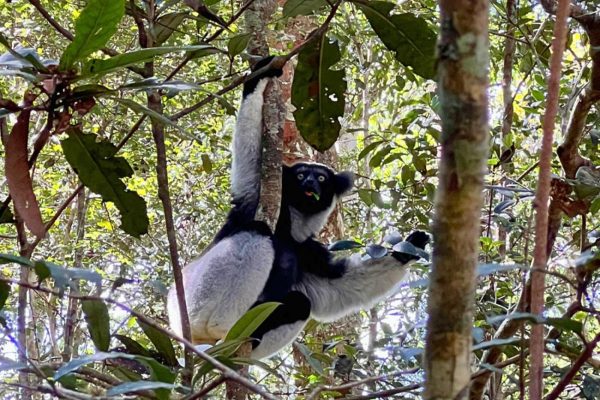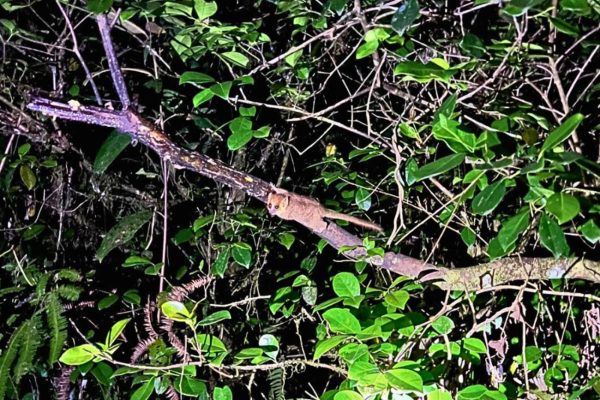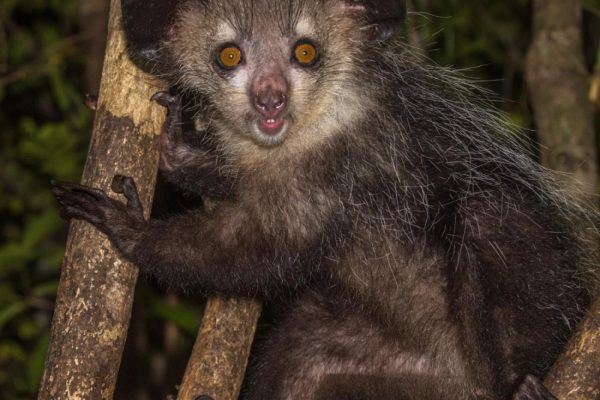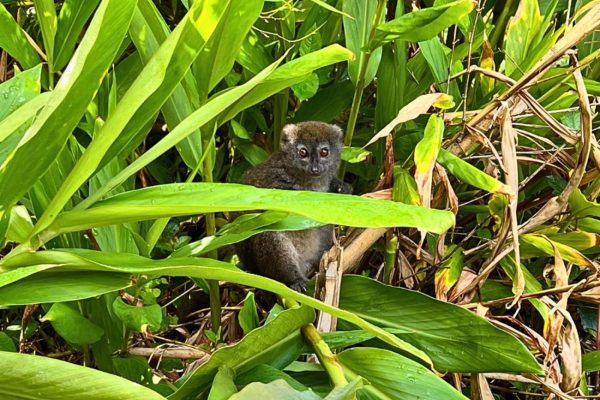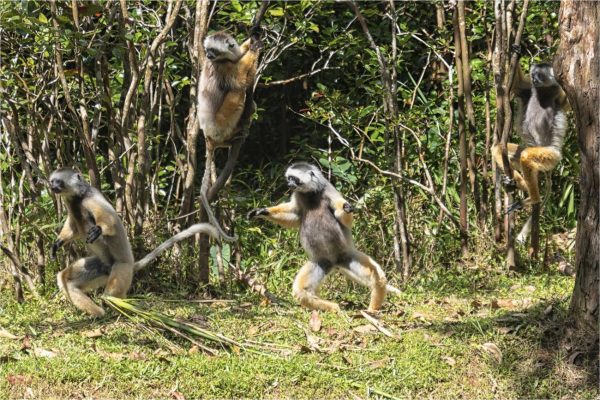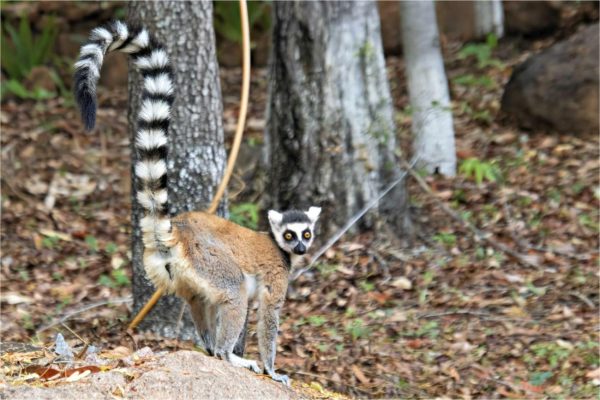The Lemurs Of Madagascar, Endemic Species
What is the initial thought that arises when you consider Madagascar? Did you envision a lemur?
Indigenous to the island, these joy-inducing beings are the most ancient primates on the planet. The initial lemurs migrated from mainland Africa approximately 70 million years ago, coexisting with dinosaurs, and, due to a scarcity of predators, flourished in isolation, allowing them to evolve into their unique and remarkable forms.
Approximately 112 lemur species exist, with new species and subspecies continually being identified. They may also be referred to by several names, making it challenging to stay informed. Regrettably, despite their numerous variances, all lemurs uniformly share an endangered status.
The primary predator of the lemur is the fossa; however, several species are also susceptible to human hunting for sustenance or occasionally owing to local superstitions. The primary threat to Madagascar’s lemurs is deforestation and extensive habitat destruction.
From the most prominent to the least, the exceptional performers to the harbingers of demise, here are several lemur species you may be fortunate enough to encounter in Madagascar.
Lemur Endemic Species
Indri-indri Lemur:
The Indri is the largest extant lemur in Madagascar, measuring up to 2.5 feet in height and weighing as much as 9 kilogrammes. The Indri is distinguished for various reasons, but our preferred attribute is its exquisitely haunting vocalisation.
Indri lemurs exhibit monogamous behaviour and reside in familial groups of a male, female, and their offspring. They vocalise collectively to promote familial cohesion and to indicate territory defence. It may be heard from almost a mile away, and they are the sole primates, apart from humans, capable of rhythmic exercise. Lower-ranking Indri lemurs exhibit a penchant for singing in antiphony, distinct from the rest of the group, to demonstrate their abilities and attract potential mates.
The Indri lemur, characterised by its anthropomorphic form and absence of a tail, is regarded by the Malagasy people as their sacred ancestors. Hunting the indri is considered ‘fady’ or forbidden; nonetheless, this has not deterred non-indigenous individuals from engaging in the practice.
The indri lemur, highly endangered due to habitat degradation and diminished birth rates, is now only located in protected forests in the eastern region of the country.
Mouse Lemur:
The mouse lemur, being about 27 cm, possesses significantly more complexity than its diminutive size implies, representing the smallest lemur and monkey on the planet.
Previously, it was believed that only two species of mouse lemurs existed; however, by 2016, a total of 24 species had been identified. They are classified as a cryptic species, indicating that, despite significant genomic changes among the lemurs, they are difficult to differentiate just on appearance. It is logical; there is less need to distinguish oneself when one is nocturnal.
This little lemur is facilitating the exploration of novel possibilities concerning neurological disorders, including Alzheimer’s and dementia, as primates share a closer genetic affinity with humans than rodents such as mice or rats.
The Duke Lemur Centre states that mouse lemurs may exhibit indications of neurological illnesses, and non-invasive research could facilitate earlier identification of at-risk individuals and potentially postpone the onset of these problems.
Although deforestation endangers mouse lemurs similarly to their larger relatives, they are more prevalent due to a greater reproductive rate and an enhanced capacity to endure moderate food scarcity.
Aye-Aye:
Finally, one of Madagascar’s most distinctive lemurs, and indeed creatures, is the aye-aye. What renders the aye-aye so peculiar? There exists an excessive number of peculiarities from which to select.
Its prominent yellow eyes and substantial bat-like ears confer an almost extraterrestrial aspect, and despite their little size, they are the largest nocturnal primates globally, at three feet in length. They were once misidentified as rodents because of their continuously growing incisors. Its most distinctive physical characteristic may be its arachnid-like clawed digits.
The aye-aye, the sole primate that employs echolocation, utilises its delicate fingers, particularly an extended middle finger, to tap on branches or tree trunks to locate grubs within. They subsequently create an incision in the bark and extract the grub with their elongated finger, a technique referred to as ‘percussive foraging.’
Regrettably, their unusual appearance may have also led to a negative reputation among the Malagasy populace. The aye-aye is regarded as a malevolent omen and a harbinger of death, leading to its frequent extermination upon sight due to folklore suggesting it intrudes into homes at night to extract hearts with its elongated claw.
They are seldom observed, as they slumber during the day and reside high in the tree canopy at night; nonetheless, poaching and deforestation exacerbate their endangered position.
Bamboo Lemur:
Summarising the bamboo lemur under a singular designation is somewhat deceptive, as there are other species of bamboo lemur, each referred to by distinct names, such as the gentle lemur, despite its reputation for being the most aggressive in captivity.
Subspecies comprise the greater bamboo lemur, the lesser bamboo lemur (also known as the eastern lesser or grey bamboo lemur), the golden bamboo lemur, and the Lac Alaotra bamboo lemur.
Notwithstanding variations in appearance and habitat on the island, the bamboo lemur derives its name from its primary dietary component—bamboo.
This is remarkable not just due to the difficulty of the food supply, being a resilient, silica-rich stalk that poses a challenge for their specialised teeth, but also because they have adapted exceptionally to counteract the large levels of cyanide it carries, which would be fatal to most other creatures. The quantity they ingest in a single day is sufficient to be lethal to a human.
Sifaka:
This assemblage of medium-sized indrids, which research indicates comprises approximately nine species, including the Coquerel’s sifaka, is characterised by opulent golden-brown fur and a prominent white face. The diademed sifaka, silky sifaka, and Milne-Edwards’s sifaka, among others, are renowned for their distinctive mode of mobility – the lateral hop.
Sifakas are formidable jumpers capable of leaping over 30 meters from branch to branch; nevertheless, they are also bipedal and employ a humorous hopping technique for terrestrial locomotion. This is the reason they are referred to as the dancing lemur.
Their Malagasy designation is an onomatopoeic representation of their unique alarm call, like ‘shi-fak’, which, in conjunction with olfactory signalling, assists the group of up to 13 members in delineating their territory.
Ring-Tailed Lemur:
The most renowned lemur of Madagascar is readily identifiable by its distinctive look, particularly its elongated tail featuring 13 alternating bands. These very sociable primates establish a ‘troop’ with 15 to 20 individuals, characterised by a female-dominated, matriarchal social structure that is uncommon among primates.
This classic lemur is not only comical in appearance but also enjoys basking in the sun. They assume a yoga posture with their arms extended to collect sunlight, which regulates body temperature and fortifies social connections.
They employ a technique known as ‘stink flirting,’ wherein they exude pheromones from their wrist glands, which they then apply to their tails and disperse into the air. They utilise this to delineate their domain.
Lemurs of Madagascar
Madagascar is renowned globally for its lemurs—primates that exhibit characteristics akin to a combination of a cat, squirrel, and dog. These animals are endemic to the island and display a variety of intriguing behaviours, from vocalising akin to a whale (the indri) to elegantly bounding across the sand like a ballet dancer (the sifaka). Herein, you will acquire further knowledge regarding these extraordinary beings.
Lemurs Of Madagascar: Social Structure
The social structures of lemurs exhibit significant variability among species. Certain species, such as the ring-tailed lemur (Lemur catta), inhabit extensive matriarchal groups including up to 30 individuals, wherein females exert dominance and regulate access to sustenance and resources. Species like the aye-aye (Daubentonia madagascariensis) predominantly exhibit solitary behaviour, congregating solely for reproductive purposes. Diurnal species are generally more sociable, whereas nocturnal lemurs frequently exhibit solitary behaviour or reside in tiny familial units. Social ties are strengthened by grooming, a crucial activity for cleanliness and social cohesion.
Lemurs Of Madagascar History
Madagascar is devoid of the predominant primate group present globally—members of the suborder Haplorhini (including monkeys, chimpanzees, gorillas, and humans). The ecological niche has instead been occupied by an earlier group of primates: the lemurs. Lemurs are classified within the suborder Strepsirhini, among bush babies, lorises, and pottos, which, like to primitive lemurs, are nocturnal, insectivorous primates distinguished by diminutive physiques, elongated snouts, and prominent eyes. Lemurs possess a distinctive evolutionary history, and their current survival is primarily attributed to Madagascar’s prolonged isolation.
Approximately 160 million years ago, Madagascar was contiguous with the African mainland as a component of the supercontinent Gondwanaland, which also encompassed South America, Australia, Antarctica, and India. As Gondwanaland disintegrated, Madagascar separated from Africa. The initial lemuriform primates in the fossil record emerged approximately 60 million years ago in mainland Africa and subsequently migrated to Madagascar.
By the time monkeys developed, some 17–23 million years ago, Madagascar had already become isolated, precluding their entrance. Monkeys, due to their superior intelligence and adaptability, outperformed lemurs in numerous regions, resulting in the decline of the lemur lineage. Only a limited number of Strepsirhines—specifically bush babies, lorises, and pottos—persisted outside Madagascar by maintaining nocturnal, solitary, and insectivorous characteristics.
Separated from these evolutionary influences, Madagascar’s lemurs proliferated into the island’s various ecological niches with minimal competition or predation. Lemurs currently inhabit almost all ecosystems of Madagascar and exhibit several behavioural similarities to monkeys, including the formation of social groups, the consumption of fruit and plants, and diurnal activity.
Upper primates did not arrive in Madagascar until humans acquired maritime skills and reached the island approximately 2,000 years ago. Humans rapidly affected Madagascar’s lemur populations, diminishing the number of species by a minimum of 15. The largest species experienced the greatest decline, and currently, the largest extant lemur—the indri—would be overshadowed by the gorilla-sized lemurs that formerly inhabited the island. At now, almost all lemur species are threatened, chiefly due to habitat degradation (deforestation) and poaching.
Diet and Foraging
The diets of lemurs differ according on species, habitat, and the seasonal availability of food. Numerous species are frugivorous, predominantly subsisting on fruit; however, the majority are opportunistic omnivores that also ingest leaves, flowers, nectar, seeds, and even insects. Bamboo lemurs (Hapalemur spp.) possess a highly specialised diet, dependent on bamboo, which harbours lethal concentrations of cyanide for most animals. The aye-aye used its elongated, slender middle finger to retrieve insect larvae from tree bark, fulfilling the ecological function of a woodpecker.
Predators and Threats
Lemurs are preyed upon by Madagascar’s indigenous carnivores, notably the fossa (Cryptoprocta ferox), a feline-like predator skilled in arboreal hunting. Additional natural predators encompass huge raptors, including the Madagascar harrier-hawk. The most significant hazard to lemurs is human activities. Deforestation, habitat fragmentation, and poaching have resulted in significant reductions in lemur populations, with more than 95 percent of species currently designated as endangered or severely endangered.
Conservation Efforts
Lemurs, due to their significant endemism and ecological relevance, are central to conservation initiatives in Madagascar. National parks and protected reserves, including Andasibe-Mantadia, Ranomafana, and Masoala, function as essential sanctuaries for lemurs. Moreover, conservation organisations are engaged in habitat restoration, anti-poaching efforts, and community-oriented projects to foster sustainable land use and ecotourism. International zoos’ captive breeding efforts seek to protect certain species; nonetheless, lemurs are critically reliant on Madagascar’s forests for their long-term existence.
Global Importance of Madagascar’s Lemurs
Madagascar occupies a unique position in world primate diversity. Although it is merely one of 92 nations with wild monkey populations, it possesses a disproportionate contribution to primate evolution and biodiversity. Russell Mittermeier, in The Eighth Continent, asserts that Madagascar hosts 21 percent (14 of 65) of all primate genera and 36 percent (five of 14) of all primate families, establishing it as the foremost priority for primate conservation globally.
Due of its exceptional primate variety, primatologists regard Madagascar as a unique biogeographic area for primate research and conservation efforts. Although the majority of primate research occurs in three primary geographic regions—South and Central America, southern and Southeast Asia, and mainland Africa—Madagascar is acknowledged as a distinct, fourth region. The lemur species, having developed in isolation for millions of years, exemplify an old lineage that has endured despite considerable environmental alterations and increasing human influences.
The preservation of Madagascar’s lemurs is essential for safeguarding the nation’s ecological heritage and enhancing scientific knowledge of primate evolution, behaviour, and adaption. The island’s monkeys serve as vital markers of forest health, fulfilling crucial functions in seed dispersal, pollination, and ecological dynamics. Due to their distinct evolutionary background and escalating challenges, lemurs have emerged as a global conservation priority.

